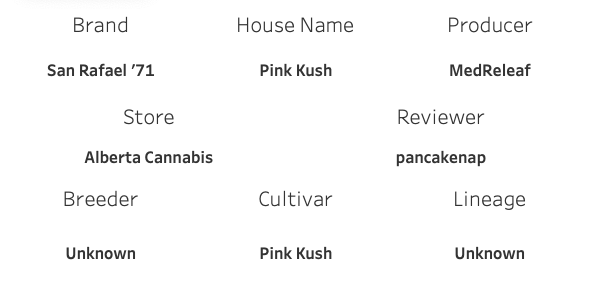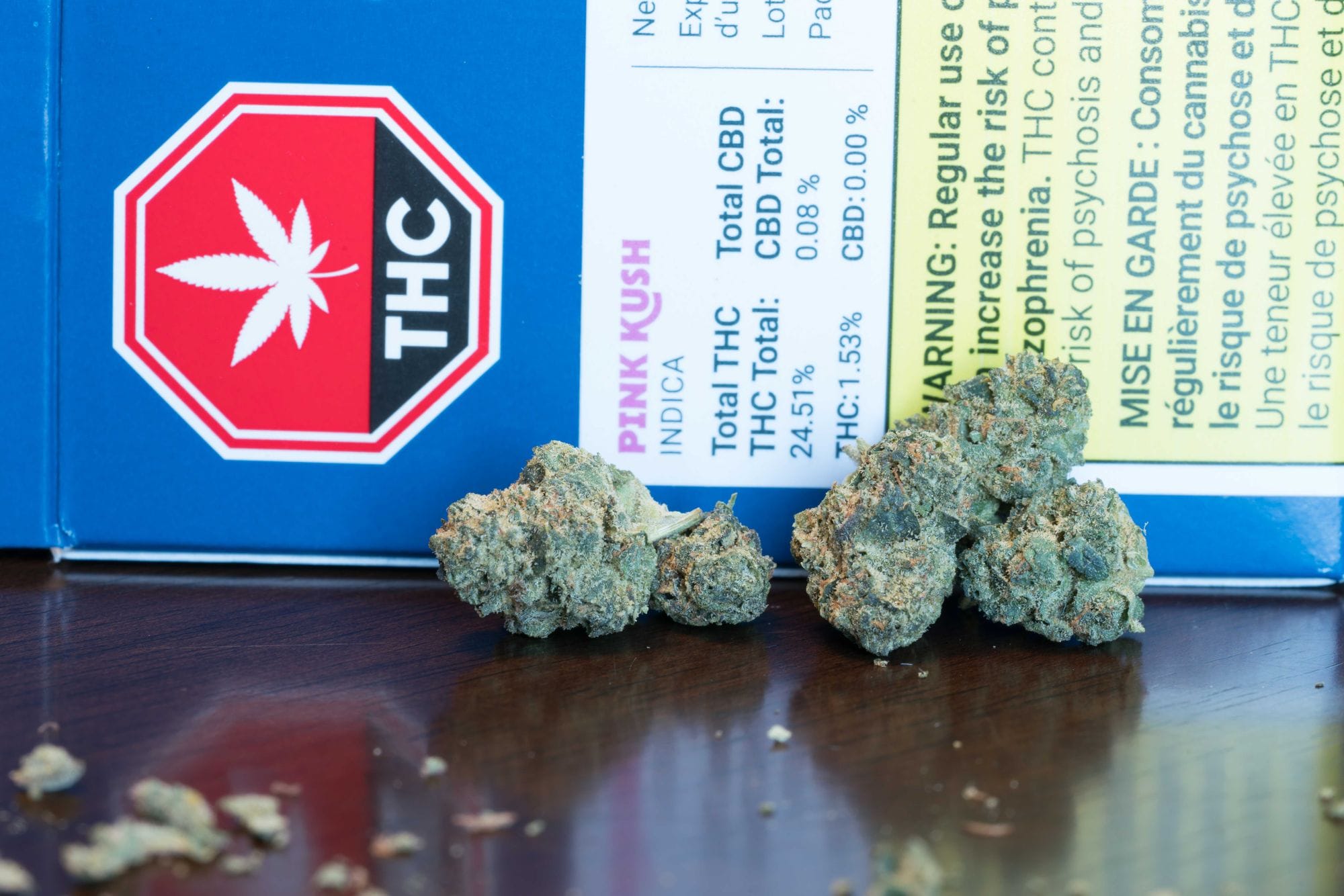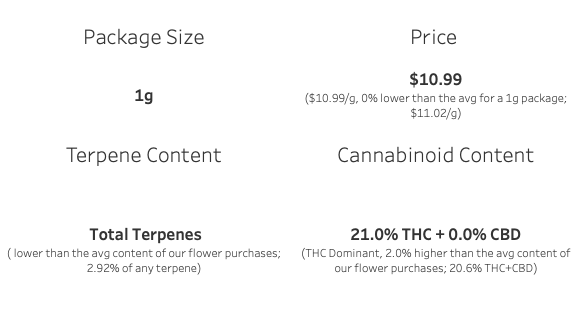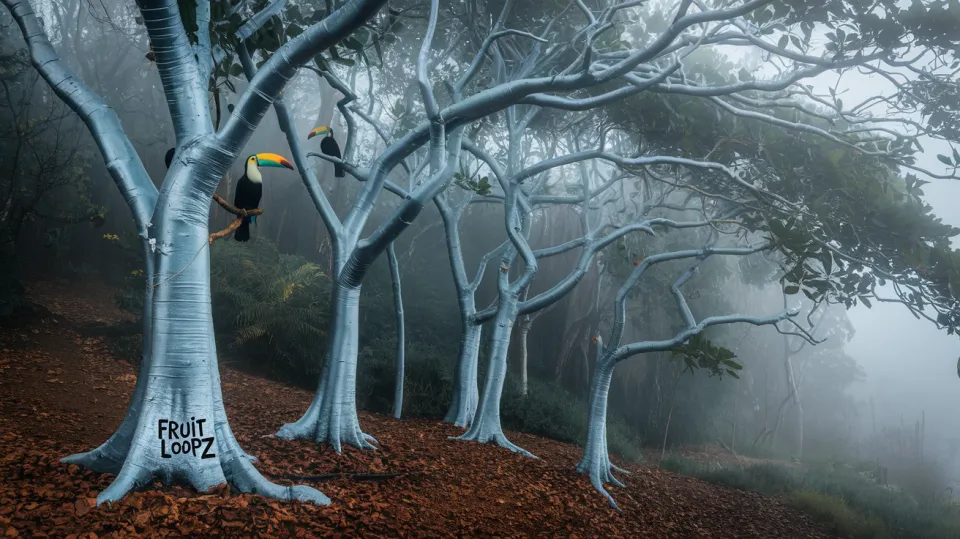San Rafael '71 Pink Kush

I've had the opportunity to experience Pink Kush from several different producers, including Broken Coast, CannaFarms, and Tilray. Each variety had its unique qualities, yet there were also common threads among them. Overall, I must admit that it's challenging for me to muster much excitement about Pink Kush. But before we dive into my thoughts on MedReleaf's Pink Kush, let's explore my diluted experiences with this popular cannabis variety. We'll discuss the intriguing interplay of sensation, memory, brand perception, and its limitations. Then, we'll delve into the concept of first impressions and relate it to this particular rendition of Pink Kush.
I tend to favor reviewing strains that I can trace back from the point of purchase to the producer and even the breeder. Thankfully, Canada's legal channels have made this possible. It allows us to explore a diverse range of strains, each with its unique character, and share their stories more effectively when we know their origin. These are exciting times for cannabis enthusiasts, as we have access to information like never before.
The history of Pink Kush, much like a fog-covered path, is shrouded in mystery. It's often described as an OG Kush phenotype, but that's about as far as I'll venture in this review. It's a perfect starting point to discuss the ambiguity surrounding Pink Kush. Ordering Pink Kush is akin to ordering drip coffee; you'll encounter significant variability from one producer to another. This variability tends to increase with the popularity of strains like Pink Kush, OG Kush, Blue Dream, Sour Diesel, and Jack Herer. As a strain gains fame, its identity becomes muddled by various breeders offering their versions under the same name, sometimes leading to confusion. Nevertheless, we can appreciate the complexity of this evolving cannabis landscape.

Now, let's explore Broken Coast's Pink Kush. Your brain's memory center sits close to the area that processes olfactory senses, making memories associated with specific smells or flavors especially vivid and easily recalled. Don't believe me? Take a moment to smell something from your childhood, like your old blanket or a stuffed animal, and experience the rush of emotional memories that come flooding back. Businesses have capitalized on this phenomenon for years, creating scents to build strong brand associations. In the cannabis industry, this commercial property is inherently embedded. Flavor sensation and perception become paramount in shaping a brand's identity, and everything else follows suit.

Consider my experiences with MedReleaf's Rex, which I believe is a variety of Tangie. Although I encountered it twice, about a year apart, the second time was remarkably easy to remember. I'm confident in my recollection, even though the two varieties were marketed under different names. The connection between the specific taste or scent and MedReleaf remains strong in my mind. I couldn't replicate that association with a Tangie from a different source because there's a high likelihood that the scent and flavor would be different between the two.
Wine enthusiasts often use the term "terroir" to describe the environment in which grapes are grown. This concept applies to cannabis as well. MedReleaf cultivates its Tangie in a specific environment, likely replicating it precisely from batch to batch. Their methodology is finely tuned. In contrast, an outdoor grower of Tangie refines their methods over time, but the outdoor environment yields a mix of similarities and differences. Both may be called Tangie, but they possess distinct flavor profiles and create different memories. Location, time of use, and various demographic variables further complicate the matter.
In summary, there's a precise production process that eventually translates into an olfactory stimulus, forming a physiological association that's closely tied to branding. The weight of this mechanism is largely carried by the olfactory stimulus, not the branding itself. And this is where my issue with Pink Kush, or any widespread strain, arises. It skips critical steps in the brand narrative in favor of capitalizing on built-in demand.
From a producer's perspective, this approach is appealing. People want Pink Kush, and there's a demand solely based on its name. It's why I purchased it at $10.99 per single gram. However, from a user's standpoint, it fails to establish a strong association along the narrative path I described earlier. It merely dilutes the association I already had with Pink Kush. No producer will ever recreate the initial impression of my first Pink Kush (Tilray) or the darkest (Broken Coast) or the smoothest (CannaFarms). Moreover, when there are duplicate variety names, I believe that product quality matters less than personal experience.
Now, let's transition to an analogy from South Bronx on a cold October Sunday. I once visited a small place in the Bronx that provided a canvas for local artists to paint murals. Despite arriving on a chilly fall morning, the experience was unforgettable. We took a train from Manhattan to South Bronx (SoBro) and walked quite a distance to find the place closed. After a phone call, a friendly soul allowed us inside to take photos. This industrial building primarily shipped imports for Italian restaurants in the New York area. While outside, the importer offered us some espresso, sourced from Italy and prepared in a Moka Pot on the stove. As we sipped the espresso, the importer shared her life story, interwoven with the neighborhood's larger narrative. In the expansive chill of the morning, amidst captivating street art and engaging storytelling, I experienced a profound connection, all without saying a word about the espresso's taste.
When asked about the best coffee I've ever had, mentioning where I obtained it might account for only a fraction of the experience. I couldn't tell you where the beans were grown or who cultivated them. My appreciation for it is rooted in the depth of my overall experience that morning, rather than the espresso's taste. Discussing the memory doesn't evoke the sensation itself. It's the olfactory sense that serves as the anchor connecting the sensory experience with the broader moment. Brand recognition alone won't forge this connection; it must be genuine on a molecular level.

Now, let's return to Pink Kush. My associations with it are a jumble of tastes and memories, lacking a clear narrative. I'd much rather explore a strain with a traceable lineage, like Emblem's Quantum Kush. While it's not a perfect match, I can confidently discuss it because the story behind it follows a linear path. It starts with a taste linked to the strain's name, then connects to the producer, and ultimately to the breeder. With Pink Kush, the track is anything but linear. Many tastes are tied to a single strain name, linked to several producers, with no clear breeder. And when depth of experience comes into play, the story becomes even more convoluted. This is why I usually refrain from discussing how I perceive a strain's effects since they are highly personal and tied to my unique experiences.
To distill all this into practical terms, the Pink Kush name initially led me to make this purchase. Beyond that, Pink Kush fades into the background. I hold MedReleaf in high regard as a producer, and my curiosity led me to try their version. In my personal hierarchy of "good" cannabis, a subjective measure, the real question revolves around my first experience with Pink Kush compared to my perception of MedReleaf as a producer. My hypothesis is that no subsequent encounter will ever surpass that defining first moment. It tends to be idealized, and everything afterward becomes comparative. This particular Pink Kush failed to create a definitive moment for me and was engulfed by my broader definition of Pink Kush. However, as we've discussed, this may be more related to my personal experience than the quality of the product.
After all these musings, I can offer two observations about MedReleaf's Pink Kush, both of which relate more to the producer than the strain itself. The structure is commendable; although MedReleaf's Pink Kush buds were smaller compared to Broken Coast's, they felt dense and spongy with a crispy, resinous exterior. Combustion was clean, and the flavor was pronounced. Towards the end, it did become a tad harsh, but overall, it was a pleasant experience.
Regarding flavor, I've had it side by side with CannTrust's Gold Kush and found the profiles to be somewhat aligned. Expect earthy notes with hints of pepper, accompanied by subtle sweetness, resulting in a smoother profile with less bite. While I admit I may be growing tired of this particular profile, it hasn't lost its appeal entirely. However, I hope I've made a compelling case that my opinion shouldn't weigh too heavily on your experience, especially if it's your first encounter with Pink Kush. This principle likely applies to any strain.
In conclusion, Pink Kush is certainly worth a try. Numerous producers offer their unique versions, each with subtle differences. Newcomers to cannabis should research the cultivation methods, as that will likely play a significant role in their experience. All three strains featured in this review have their merits and are recommendable. They are like triplets separated at birth, raised by different parents, best enjoyed together in a big mish-mash. The initial experience tends to be the most impactful, so make the most of it. Personally, I find that legal cannabis introduces a multitude of new tastes, and I've likely had my fill of Pink Kush varieties. I'm more intrigued by innovative creations with thoughtful design. There was a time when I felt that way about Pink Kush, which led me to buy it multiple times, including this one, but the initial impression remains unmatched.
Thank you for reading. If you're interested in further exploration, I've also written about CannTrust's Gold Kush, which has a similar flavor profile. Additionally, you can revisit my thoughts on MedReleaf's Tangerine Dream, a topic we touched upon here. Much of the psychology discussed here revolves around sensation, perception, and a bit of abnormal psychology, all with significant implications for the marketing themes we've explored. If you're interested in delving deeper into this subject, I can recommend a textbook (apologies in advance):
"Sensation & Perception, 4th Ed." by Jeremy M. Wolfe, Keith R. Kluender, Dennis M. Levi, Linda M. Bartoshuk, Rachel S. Herz, Roberta L. Klatzky, and Daniel M. Merfeld.



